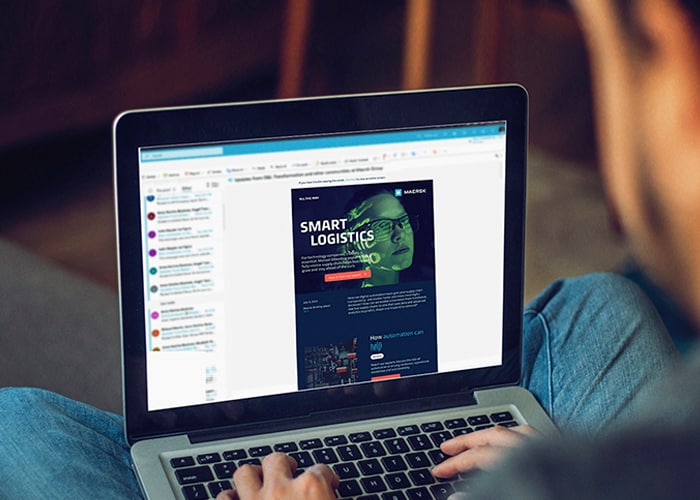Peak season is the ultimate test for every freight network, when logistics systems face their toughest challenges: compressed timelines, surging volumes, and heightened customer expectations. The real test isn’t just how much freight gets moved, but how intelligently it’s moves.
In 2025, the traditional peak season shifted dramatically. According to the Global Port Tracker, U.S. ports handled a record 2.39 million TEUs in July, marking an early surge in freight volumes. By contrast, October is forecasted at just 1.97 million TEUs, with November expected to drop 19.2%, and December projected at 1.72 million TEUs.
Retailers are ordering in smaller, more frequent waves, creating short-notice tenders and regional demand spikes. This puts pressure on ground freight networks to be more agile and responsive.
In recent years, the conversation around ground freight has shifted. Shippers aren’t just looking for capacity and competitive rates. They’re asking deeper questions:
- Can you help me avoid disruptions before they happen?
- Can you support smarter planning, not just faster shipping?
These are signals of a broader shift, from transactional logistics to strategic intelligence-led partnerships.
Predictive visibility that enables proactive logistics
Predictive analytics has become an industry essential. Companies using AI-driven forecasting tools have seen up to a 65% improvement in service quality and a 15% reduction in logistics costs.
Traditional tracking systems tell you where your freight is, but by the time a delay is flagged, it’s often too late to act. By analysing weather, traffic, and performance data, AI systems can identify potential disruptions and trigger pre-emptive actions.
This kind of foresight allows logistics teams to reroute shipments, communicate proactively, and preserve critical delivery windows. Especially during peak season, when timing is everything, predictive visibility isn’t a luxury, it’s a necessity.
Here’s how predictive visibility plays out in practice:
A national retailer is preparing for a major holiday promotion centred around seasonal goods, items with time-sensitive, high-demand seasonal inventory. One shipment, scheduled to arrive at a distribution centre, is at risk due to a developing winter storm across its transit route.
Instead of waiting for the delay to materialize, the retailer’s logistics team, supported by predictive visibility tools, receives an early alert. Within hours, they reroute the shipment through an alternate corridor, avoiding the storm entirely. The goods arrive on time, the promotion launches as planned, and the retailer avoids both lost sales and costly recovery efforts.
The takeaway? Visibility isn’t just about knowing where your freight is. It’s about knowing what’s coming and having the agility to act before it’s too late.

Billing accuracy as a strategic advantage
In freight, billing isn’t just a back-office function; it’s a frontline challenge. With thousands of trusted vendor relationships, layered contracts, and variable rates, even small errors can lead to delayed payments, disputes, and operational friction.
At Maersk, we’ve invested in AI-enabled billing systems to validate and cross-reference charges against contract terms and operational data in real time. These tools aren’t just improving internal efficiency, they’re helping customers and vendors reconcile faster, reduce billing disputes, and gain clearer visibility into their freight flows.
During peak season, when volumes surge and timelines compress, billing precision becomes a competitive edge reinforcing trust, freeing capacity, and allowing customers and vendors to focus on performance rather than reconciliation.
Planning over speed
Speed will always matter in freight, but the most advanced shippers prioritize predictive planning. With 80% of 3PLs and 77% of shippers now investing in predictive analytics, the shift toward smarter planning is well underway.
The right provider will support scenario planning, offer flexible routing options, and help optimize freight spend, not just execute shipments. This requires providers to move beyond execution and into consultation. The best ground freight teams aren’t just moving goods; they’re helping customers with intelligent logistics through data, insight, and disciplined execution.
What Maersk is seeing
As peak season logistics grow more complex, the industry is undergoing a shift, from reactive execution to proactive intelligence. While many providers still rely on traditional tracking and manual reconciliation, forward-thinking freight partners are integrating AI forecasting, machine-learning optimization, and digital auditing to navigate volatility with greater precision.
Within Maersk Ground Freight, we’re seeing this transformation firsthand. Across our North American network, AI and machine learning tools are fully embedded into daily operations, guiding how we plan, route, and deliver. These systems simulate multiple routing scenarios to optimize cost, lead time, and service consistency, enabling customers to make informed decisions before freight moves.
This isn’t just about technology, it’s about orchestration. Our network-planning teams and terminal operators work in tandem with intelligent systems to optimize throughput, asset utilization, and delivery density. Each day, thousands of shipments including Expedited LTL, Dedicated Fleet, and Home and Store Delivery, are orchestrated using predictive scheduling and real-time visibility tools that ensure precision and reliability at scale.
The future of freight is not defined by volume alone, it’s defined by foresight, adaptability, and resilience.
About the expert
Gabriel is a logistics and supply chain expert with over 25 years of experience spanning network operations across diverse industry sectors. His international career has shaped a global perspective on leadership, operational excellence, and strategic network design. He currently serves as Head of Maersk Ground Freight in North America, overseeing a network of more than 65 stations and hubs. He holds an Executive MBA from MIT Sloan School of Management and an MBA from the University of Liverpool.
Be ready for predictive logistics to go all the way! Discover more with Maersk Logistics Insights, and learn more about how AI and visibility tools are transforming peak season performance, or for more logistics trends and insights, read and download The Logistics Trend Map.















